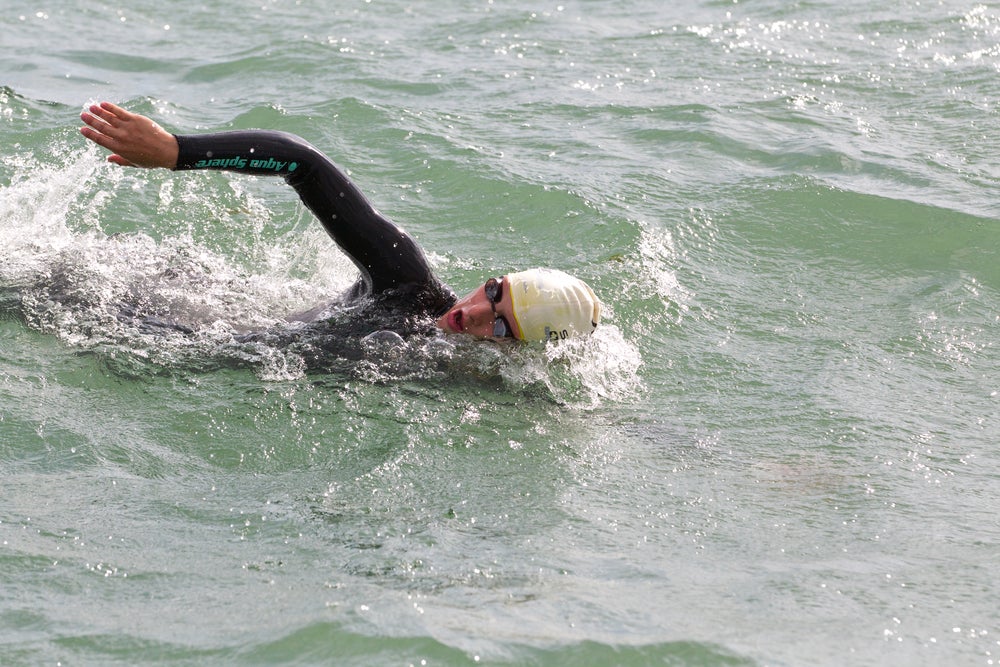Ask Coach Sara: Making The Most Of Open-Water Swims

Photo: <a href="http://www.shutterstock.com/gallery-764320p1.html?cr=00&pl=edit-00">Martin Good</a> / <a href="http://www.shutterstock.com/editorial?cr=00&pl=edit-00">Shutterstock.com</a>
Your Twitter questions about swimming as a triathlete, answered by coachand professional triathleteSara McLarty.
Q: I am afraid of losing my goggles during a race. How can I keep them secure? – @pasavito
A: Keep your goggles on your head through all kinds of open-water chaos by putting the straps under your swim cap! Even if the lenses get bumped off your face or a wave fills them with water, you can always roll onto your back and adjust them back over your eyes. Ladies: Bring an extra cap to wear under the goggles to prevent your hair from getting tangled in the straps.
RELATED: Dealing With Unexpected Open-Water Swim Scenarios
Q: I have trouble pacing myself at the start of a race, and always go out too fast. How can I set myself up for a smarter start? – @Jarvitalize
A: The feeling of starting “too fast” can be attributed to a poor or nonexistent warm-up before the race starts. Make sure that you prepare for the initial sprint by doing some running strides before getting into the water. Start with a 5–10-minute jog followed by 4×30-second strides (build from slow to fast) with a one-minute walk between each. Finally, try to elevate your heart rate just before the gun goes off with short, quick jumps on the beach or quick-cadence vertical kicking in the water.
RELATED: How To Do A Dolphin Dive
Q: I train mostly at the beach. Do you have any tips or workouts for getting the most out of open-water swims? – @el_slice
A: Mark a measured distance (e.g., 200 yards) with temporary or permanent markers (you can use cheap buoys or landmarks on shore). Break up the swim into sets similar to a pool workout. Start with a 400–800 warm-up. Get your blood pumping with a 400 as 20 strokes sprint, 20 strokes easy/choice. The main set is 9×200 with 20–30 seconds rest (one easy, one medium, one hard, repeat). Finish with 200–400 cool-down.
RELATED: Open-Water Training In A Pool
Q: What is in your bag of tricks at a race? – @dpaton01
A: A smart athlete is prepared for anything on race day! I carry everything that I need to race plus these smart extras: headlamp (for dark transition areas), spare set of goggles, Body Glide, pre-race gel and snack (in case start is delayed), swim cords for warm-up, small multi-tool, zip-ties and rubber bands (I can temporarily fix anything with those!), safety pins, extra sunglasses, a dry towel and post-race nutrition.
Pro triathlete and swim coach Sara McLarty has 25-plus years of experience and knowledge about swimming mechanics, efficiency and technique.